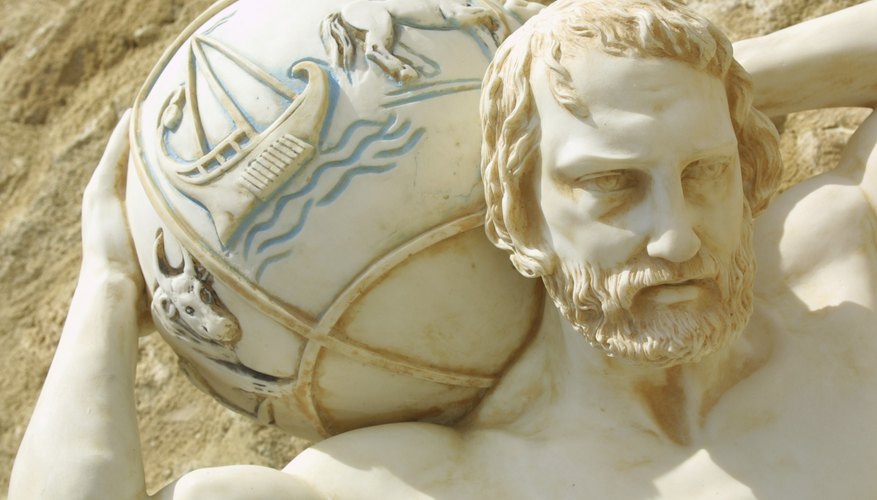Atlas stones are man-made concrete boulders used to prove human strength in strongman competitions. These stones can be heavier than 90 kg. Although the use of these stones has primitive roots in the lifting of large rocks, the modern Atlas stone is an almost perfect sphere made of concrete. You can create your own atlas stone with some basic supplies from your local hardware shop.
Cover a large rubber ball with plaster of Paris, using the plywood square as a work surface. The diameter of the ball will determine the weight of your atlas stone. For example, a 140 cm (54-inch) diameter ball will create a 98 kg (216 pound) stone, while a 157 cm (62-inch) ball will create a 148 kg (326 pound). stone. Following the manufacturer's instructions for mixing, cover the entire outside of the ball with a one inch thick coating of plaster. This will become your mould for the stone. Allow a 6-inch opening at the stop of the stone to fill the mould with concrete later.
- Atlas stones are man-made concrete boulders used to prove human strength in strongman competitions.
- Cover a large rubber ball with plaster of Paris, using the plywood square as a work surface.
Once the plaster mould has dried overnight, deflate the rubber ball inside the mould by poking it with a knife, or using an inflation needle if you wish to reuse the ball for another stone. Remove the ball from the inside of the mould.
- Once the plaster mould has dried overnight, deflate the rubber ball inside the mould by poking it with a knife, or using an inflation needle if you wish to reuse the ball for another stone.
Mix four bags of Portland cement in a mixing trough. Slowly add water and completely mix with a shovel until the concrete becomes the consistency of thick pancake batter. Remove all lumps in the wet cement so that there will be no imperfections in your finished stone.
Pour the concrete into the plaster mould with a shovel, filling up the entire sphere. Make sure that the concrete is not leaking out of the bottom of the mould. As you pour the concrete into the mould, tap the plywood base with a hammer, which will pop any air bubbles in the concrete (bubbles could cause imperfections in the Atlas stone). Cover the top of the mould with a damp rag to keep the concrete from drying too fast and cracking. Allow the concrete to dry at least three days before removing the mould.
Remove the mould by gently tapping it with a hammer. This tapping will slowly remove the soft, plaster mould from the concrete sphere in the centre.
Inspect the outside of the finished stone for imperfections and patch them with concrete patching compound, where needed.
TIP
Complete the project outdoors or in your garage, because it can be very messy to clean up.
